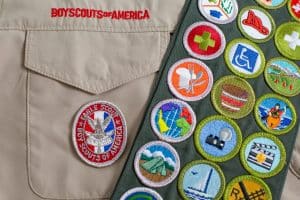What the Boy Scouts Settlement Can Teach Us About Recognizing Child Sex Abuse
 One of the largest sexual abuse lawsuits in the history of America was settled this year. The lawsuit in question happens to be the lawsuit against the Boy Scouts of America (BSA). The $850 million settlement covers claims made by about 60,000 abuse survivors from the Coalition of Abused Scouts and two other groups.
One of the largest sexual abuse lawsuits in the history of America was settled this year. The lawsuit in question happens to be the lawsuit against the Boy Scouts of America (BSA). The $850 million settlement covers claims made by about 60,000 abuse survivors from the Coalition of Abused Scouts and two other groups.
The claims in the lawsuit describe various acts of child sexual abuse conducted by scout leaders across all 50 states. As thousands of men share their experiences of being abused by scout leaders, it is apparent that the Boy Scouts of America promoted and encouraged a culture of child sexual abuse.
The damage done by BSA cannot be discounted, but it has one silver lining: an open, honest conversation in public and behind closed doors about what childhood sexual abuse is and how it affects people for the rest of their lives.
Sexual abuse has damaging psychological and mental effects on children
According to the American Academy of Child and Adolescent Psychiatry (AACAP) about 1 in every 4 girls, and 1 in every 13 boys, in the United States will experience sexual abuse at some time in their childhood. Per AACAP, children who were sexually abused were discovered to have a higher chance of developing:
- Depression
- Post-traumatic stress disorder
- Drug addiction
- Suicidal behaviors
- Physical conditions such as heart disease
Some of the victims of the Boy Scout leaders have experienced these types of symptoms, along with shame and guilt concerning the abuse. Some victims have reported having struggles maintaining relationships, while some victims have committed suicide as a result of the abuse.
What constitutes an act of child sex abuse?
Perpetrators of child sexual abuse are not just exclusive to one type of person. A parent, stepparent, teacher, sibling, or mentor can engage in sexual abuse against a child. Child sexual abuse covers a wide range of illegal sexual activities, such as:
- Possessing sexualized images of children
- Forcing a child to engage in sexual acts, such as stripping, masturbation, or penetration
- Taking, downloading, viewing or distributing sexual images of children
- Encouraging a child to engage in sexual acts in front of a webcam
- Inappropriate sexual touching of a child, whether the child was clothed or unclothed
What is child grooming?
One nefarious skill that each Boy Scout leader implemented was the skill of grooming their victims. Another victim, who wanted to remain anonymous, described how a scoutmaster sought him out due to the fact that his father was not present in the home. This act would be an example of child grooming. Child grooming is the act of befriending or building a relationship of trust with a child or young person to manipulate, exploit, or abuse them.
Sexual abuse perpetrators use this tactic to gain the confidence and trust of their victims. The relationship a groomer takes can be in the form of a mentor or an authority figure. Some of the actions groomers take to gain trust with their victims are to buy gifts, give the victim an abundance of attention, give advice or show understanding to the victim, or take them on special trips or outings. As was the case with many other young boys, Scout masters would perform these same acts by taking the boys camping on the weekends and isolate them from their friends and family.
What are the signs of child sexual abuse?
Depending on the age of the child, the signs of sexual assault can vary.
Emotional signs of child sexual abuse
Some of the signs you may notice in children who have been sexually abused are changes in behavior, avoiding the abuser, engaging in sexually inappropriate behavior, and hinting at abuse. Children may start becoming more aggressive, withdrawn, clingy, anxious or rebellious. When it comes to avoiding the abuser, the child may seem afraid of the person and do everything in his or her power to avoid being alone with the person. Children may also behave in sexually explicit ways or use sexually explicit language. The child may also give the parent or caretaker little hints or clues as to the abuse that is happening.
Physical signs of child sexual abuse
Some of the physical signs that may allude to child sexual abuse are suspicious bruising, bleeding, redness, or soreness in the genital or anal areas. Children may also have a persistent and recurrent pain while using the bathroom. In some cases, children may suffer from regular nightmares and begin to have wetting accidents in the bed. Chronic stomach pain is also a symptom many children who have been sexually abused experience. In some extreme cases, children may be given sexually transmitted diseases.
Please contact Paulson & Nace, PLLC through this contact form or by calling 202-463-1999.

For more than 40 years, Barry J. Nace has worked to protect the rights of victims of medical malpractice and other personal injuries. Throughout his career, he has proven that multimillion-dollar awards are not a matter of luck, but the result of experience, hard work, outstanding trial skills, and an unquestioned dedication to justice. To date, Mr. Nace has produced dozens of verdicts and settlements in excess of $1 million with three in excess of $30 million. Read more about Barry J. Nace.
